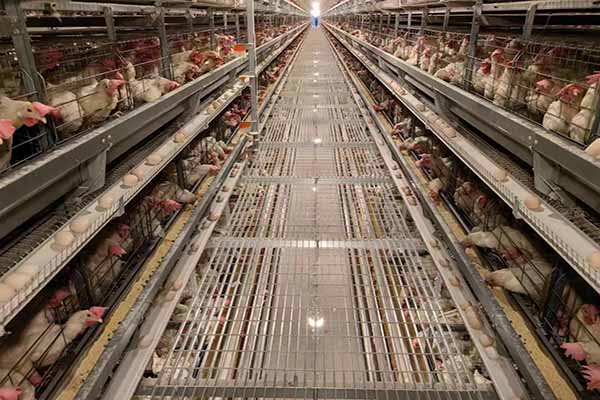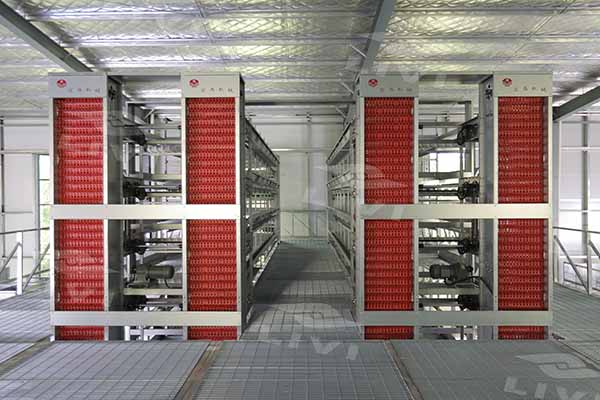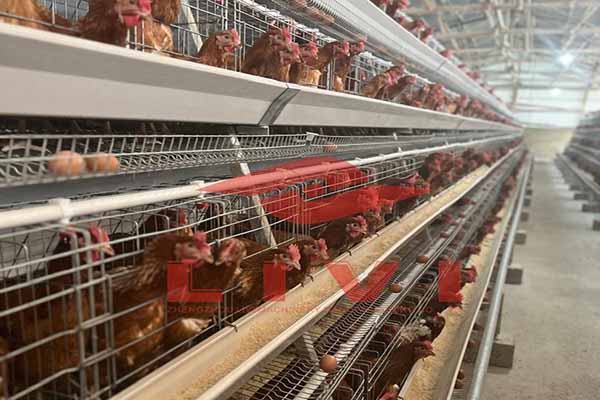
The poultry industry in Zimbabwe is facing increasing pressure to enhance productivity and reduce operational costs as consumer demand for high-quality eggs rises steadily. Many large-scale egg producers struggle with labor-intensive processes, inefficient management, and inconsistent product quality. Against this backdrop, the introduction of Zhengzhou Livi Machinery’s innovative H-type automated layer cages has marked a significant turning point, demonstrated vividly by a major Zimbabwean poultry farm.
Zimbabwe’s commercial egg sector traditionally relies on manual feeding, egg collection, and waste management systems. This setup results in higher labor costs and susceptibility to disease and production inefficiencies. Additionally, managing thousands of laying hens across multiple tiers without automation limits both output consistency and scalability, directly affecting profitability and market competitiveness.
The H-type layer cage integrates multi-tiered design with automated management systems engineered to global standards (ISO 9001 & CE certification). Key features include:
| Feature | Benefit |
|---|---|
| Innovative H-Type Multilayer Structure | Maximizes cage density, saving floor space by up to 40% |
| Automated Egg Collection System | Reduces egg breakage rate by over 25%, boosting yield integrity |
| Automated Feeding and Waste Removal | Lowers labor costs by 35%, enhances hygiene levels, and reduces disease risks |
| Robust Stainless Steel Framework | Ensures durability and minimizes maintenance downtime |
Prior to adopting Zhengzhou Livi’s solution, the customer managed 50,000 laying hens across conventional floor systems. Production inconsistencies and high labor demands capped daily egg output at approximately 33,000 eggs, with a breakage rate near 12%. Manual feeding, collection, and waste disposal led to frequent biosecurity challenges.

After integrating the H-type cage system, the customer observed remarkable improvements within six months:
The integrated automation features encompass synchronized feeding mechanisms, conveyor-based egg collection, and streamlined waste management — all monitored via remote management software. This convergence creates a seamless operational flow that significantly cuts manual intervention and time wastage.

Financially, the farm reduced annual labor expenditure by approximately 30%, translating into hundreds of thousands of USD saved annually while simultaneously increasing net revenue due to higher egg volumes and lower losses.
Zhengzhou Livi Machinery’s adherence to international certifications such as ISO 9001 and CE provides assurance regarding product quality, safety, and environmental compliance. This global recognition contributed significantly to the Zimbabwean customer's confidence in making the capital investment, boosting supplier trust and opening doors to export opportunities.
Improved productivity and quality have enabled the customer to increase their market share domestically and explore regional export markets competitively. The sustainability of this system lies in:

As automation continues to revolutionize poultry farming, the integration of IoT-enabled monitoring and data analytics will further empower producers to optimize hen health, feed efficiency, and egg quality in real time. Zimbabwe’s growing egg market, bolstered by investments like this case, is poised to lead regional innovations in sustainable, scalable poultry production.
For global buyers seeking to modernize their layer farming operations, Zhengzhou Livi’s H-type automated cage systems offer a proven pathway towards higher yields, lower costs, and international standard compliance.

